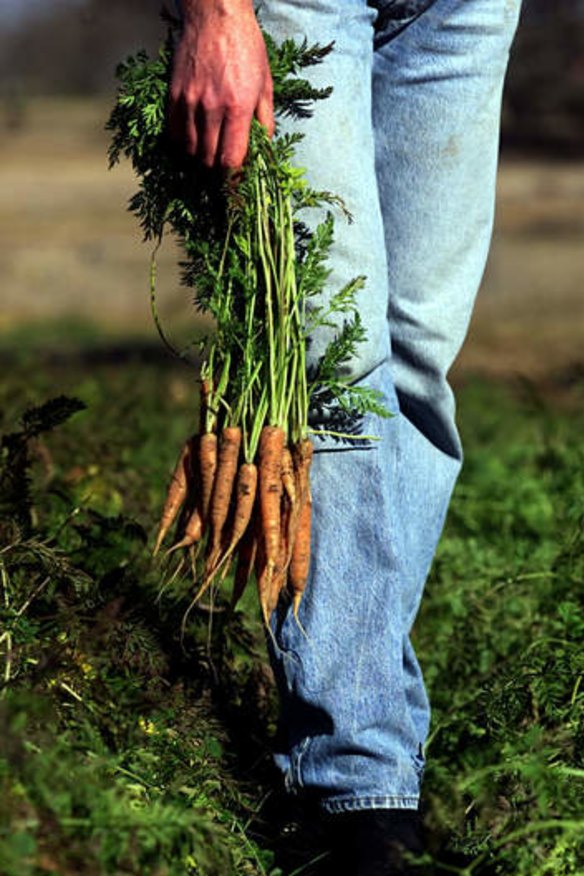Dutch courage

Carrots can be very productive in a small space. In fact, per square metre, carrots produce the highest yield of any vegetable. With just five two-metre rows, you can supply a family over several months.
But to successfully grow carrots, you need to meet four key requirements. If you can follow through on these aspects, you should indeed be able to grow a good crop. And remember carrots do not like being transplanted, so don't be tempted by a garden centre trying to sell you carrot seedlings.
The first requirement is deep, loose soil with no rocks or stones and a fine tilth. Compacted or rocky soil will cause carrots to fork.

Do not add fresh manures and do not pre-fertilise the garden bed, as this will result in the carrots forking or becoming disfigured.
Thirdly, carrot seeds should be planted close to the surface. Shallow and spacious is the catchcry. I use a long wooden stake to firstly sweep across the surface of the garden, to make sure it is flat. Then I turn the stake by 45 degrees and gently press down to create a shallow V for planting. With time and patience, you can successfully sprinkle just a few seeds along each row. Hold the seeds in a cupped hand and take just a few at a time between the thumb and index finger of the other hand.
Finally, remember carrot seeds take quite some time to germinate, and they will fail to germinate at all if the soil is allowed to dry out. In early spring it can take up to three weeks for the little shoots to appear. So it is wise to cover the garden bed with hessian or floating row covers to prevent the bed drying out. Check regularly and keep it moist but not wet. After two weeks, check for the first signs of emerging plants and remove any cover as soon as the first shoots have appeared.
If you are too generous and a thick crop of carrot seedlings comes up, then simply thin out before they are too advanced. Some gardeners will mix sand with carrot seed to help spread them out along the rows. Others plant radishes with the carrots, to help break up the surface soil and get the crop going.
''Little finger'' baby carrots and little round ''Paris market'' carrots will produce a good crop in two months. The French Nantes and the Dutch Amsterdam carrots are good mid-season varieties, producing heavy crops. Amsterdam is a good carrot for freezing - simply slice or dice and blanch, then place into a freezer bag. Chantenay is a short, broad carrot, deep orange in colour and very sweet and tender and it will grow well in heavy soils.
The western red is an old Australian variety that will grow deep into the soil and produce quite large carrots. Purple dragon is an excellent yielding variety with purple skin but the flesh inside is still a rich orange colour.
To ensure a regular supply, start an extra two or three rows each month until February.
You may be interested to know that all carrots were once purple or white. In the 17th century Dutch scientists set about breeding orange-skinned carrots to match the national colour.
>> Owen Pidgeon owns the Loriendale Organic Orchard near Hall.
This week I'm:
■ Plant beetroot and parsnip seeds directly into the garden, sowing seeds seven centimetres to eight centimetres apart and two centimetres deep.
■ Mix radish seeds with your carrot seeds, as they will germinate more quickly and help to break up the soil surface. When they are harvested in five to six weeks, there will be more space for the carrots to grow.
■ Tie up broadbean and pea plants to supports, to prevent wind damage.
■ Prepare a deep garden bed for planting potatoes later in the month, removing any sticks and rocks. Set out your seed potatoes in a well-lit location but not in direct sunlight, so they begin to sprout before planting.
■ Weed around all early-planted vegetables, such as garlic and onions, then mulch well, to keep the spring weeds at bay.
Restaurant reviews, news and the hottest openings served to your inbox.
Sign up